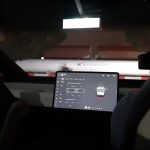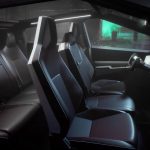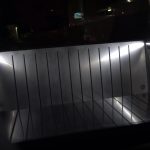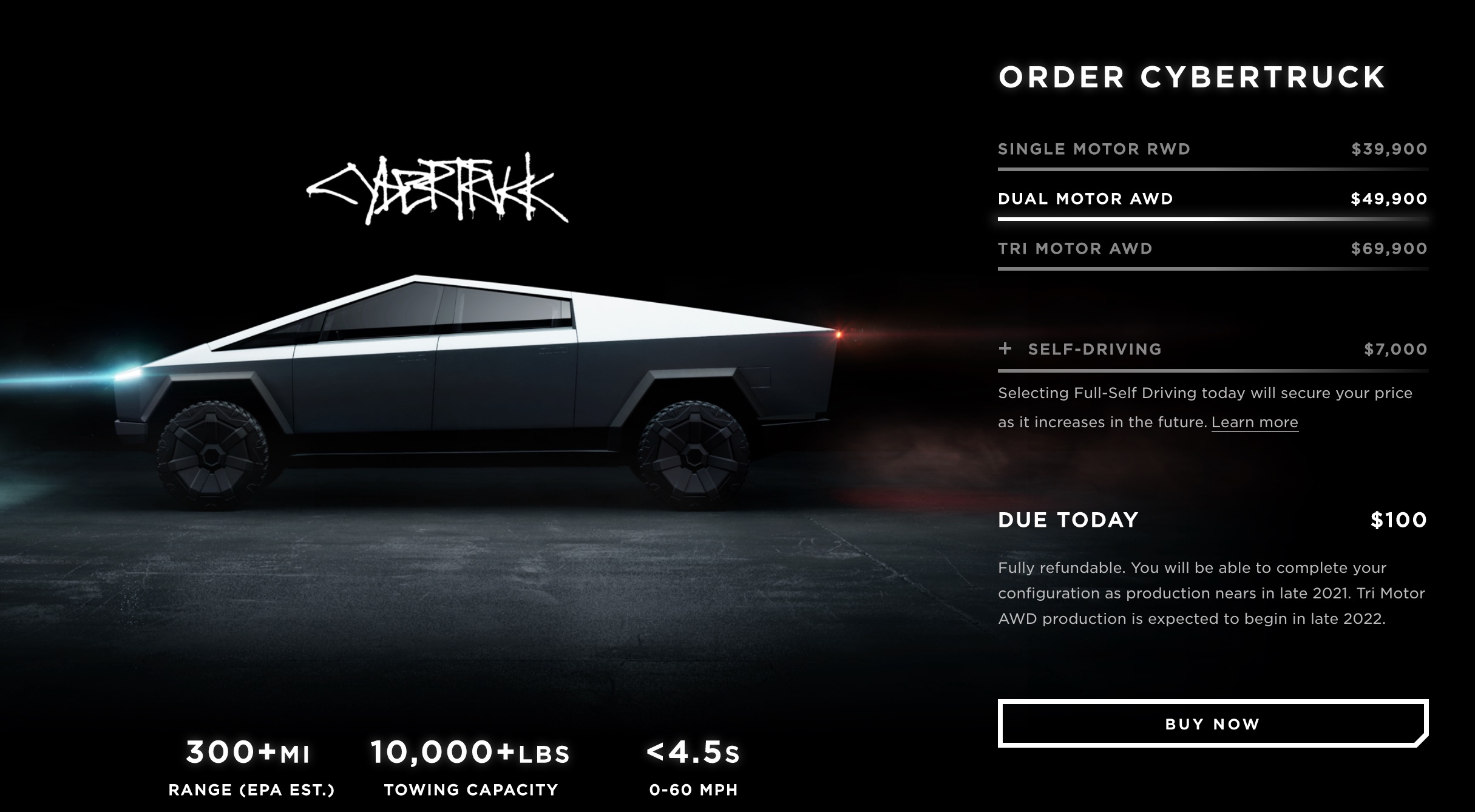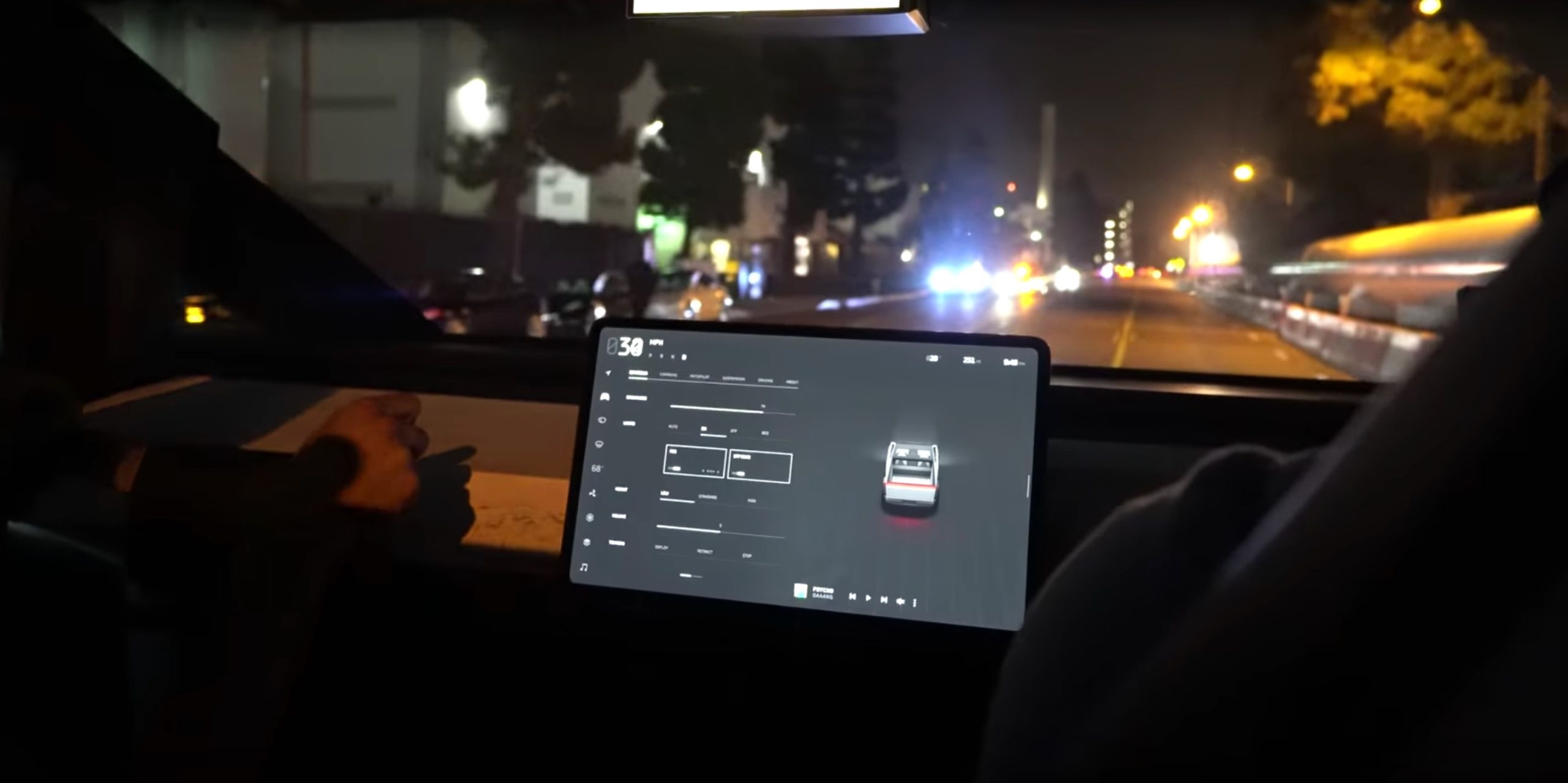
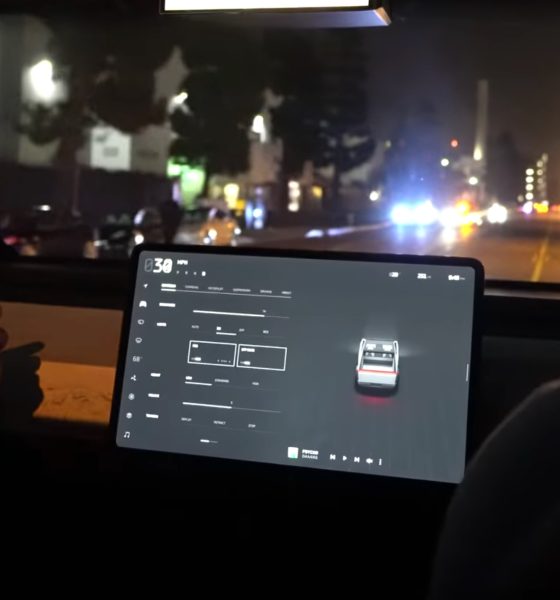
News
Tesla Cybertruck first ride impressions: Musk’s futuristic pickup is everything I thought it wasn’t
Tesla’s new Cybertruck is as much of an all-electric pickup truck for the adventurous early adopter and high-tech consumer, as it is an aristocratic armored battle machine for a dystopian future. At least that was my first impression after taking the first test ride in Elon Musk’s seven-year-in-the-making baby on Thursday night in Los Angeles.
Riding through the backlot of Tesla’s Design Studio and SpaceX headquarters, it didn’t immediately register in my head that this spirited test ride was taking place inside a bulletproof truck that’s the size of a Ford F-150 SuperCab. Spanning 231.7 inches long, 79.9 inches wide, and 75.0 inches tall, Tesla’s Cybertruck isn’t exactly small and certainly won’t be someone’s second Tesla sharing the average home garage. This thing is going on the driveway.
The auto-presenting door handles are reminiscent of the Tesla Model S and run flush against Cybertruck’s DeLorean-style stainless steel body. Not any regular stainless steel. Musk’s brainchild is fortified by ultra-hard 30X Cold-Rolled stainless-steel that Tesla calls the Exoskeleton.
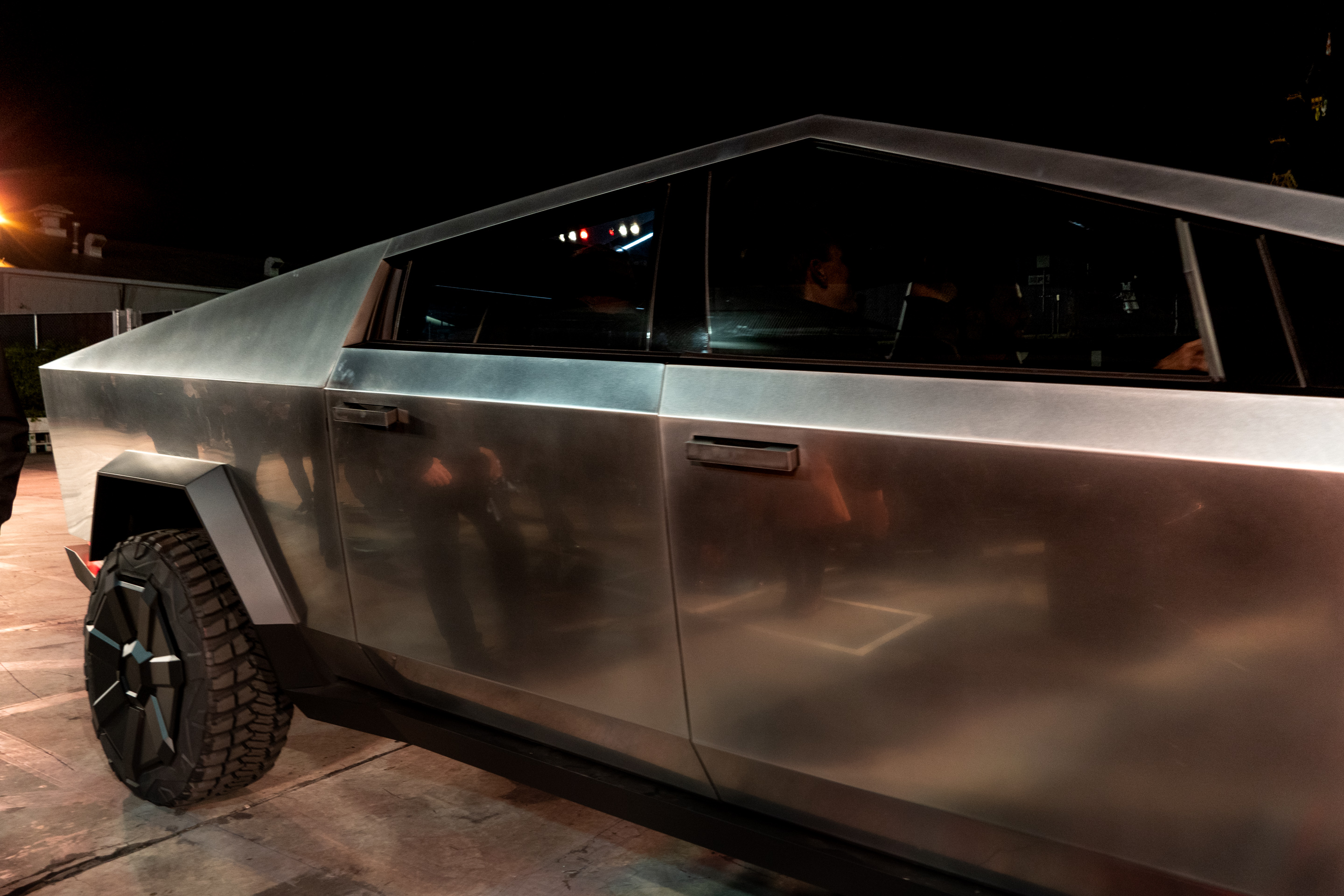
As we climbed into the cyberpunk “Blade Runner” inspired truck, a satisfying thud from closing the door jarred my memory that Tesla’s Chief Designer Franz von Holzhausen just slammed a sledgehammer against them. This thing’s a beast.
And we’re about to take off.
The ever-so familiar feeling of instant acceleration from an all-electric powertrain would follow. We blasted down Jack Northrop road in Tesla’s dual-motor prototype, reaching 60 mph from a gradual 20 mph roll in roughly 4 seconds. Tesla claims a 0-60 mph time of 4.5 seconds for the dual-motor variant, while a tri-motor configuration will be able to eclipse it in 2.9 seconds.
The sounds of Cybertruck’s big, knobby tires clawing at the road are a reminder that no noises go unnoticed in an electric vehicle.
Tesla’s DNA for interior design that’s characterized by extreme minimalism, combined with high-tech features, carried through to its electric Cybertruck. A single 17-inch center-mounted touchscreen acts as the main command center for this heavyweight. Tesla didn’t release details on Cybertruck’s weight, however judging by the similarity in size to a Ford pickup, and taking into account a battery pack that can support up to 500 miles of range, one can presume that Tesla’s “Supertruck” will top the scales at nearly three tons. The rearview “mirror” is actually a digital display that projects video captured from a rear-facing camera. This allows for greater visibility, especially when cargo’s on board such as a Tesla All-terrain Vehicle. Because the truck’s vault can also be covered and used for closed storage, having a camera that streams video to the rearview mirror is of utmost importance.
- (Credit: Tesla)
- Tesla Cybertruck 6.5 ft pickup bed “Vault” (Photo: Teslarati)
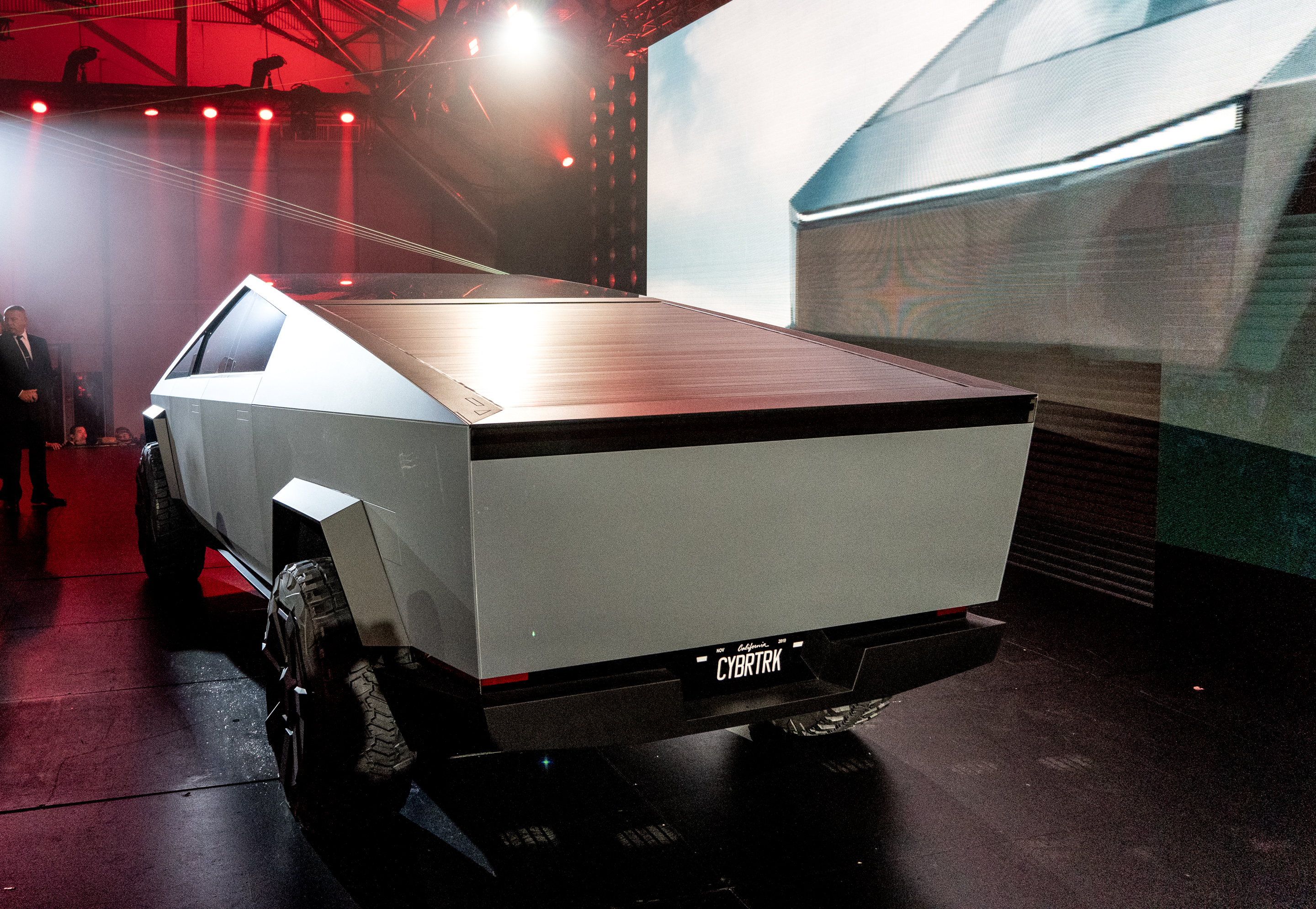
The dashboard and center console were very reminiscent of the Tesla Model 3. The interior was comprised of an airy glass roof, seating for five adults with the option to have a sixth seat in place of the front center armrest, and not much else.
Looking out through the narrow rear window and Cybertruck’s stainless steel finish comes into focus once again. What is traditionally referred to as the pickup bed, Tesla is calling this 6.5 feet long space a vault. A sleek set of lights runs alongside the vault and illuminates any content that’s inside.
With a starting price of $39,900 for the single motor Cybertruck and just under $50,000 for the dual-motor all-wheel drive variant, Tesla’s pickup truck is priced competitively in the top-selling automotive category in the US.
Will Cybertruck appeal to the existing Ford and Dodge pickup truck demographic as we know it? Probably not. But that’s okay. Its polarizing look that elicits feelings of both I love you and I hate you, takes some time to process before becoming a buyer.
Similar to Musk’s mission to showcase an alternative to the traditional minivan with something utterly over-engineered like the Model X, Tesla aims to do what the Falcon-winged SUV did for the soccer Mom, as it looks to do with the DIY-savvy early adopter who also happens to be a bit handy. Make no mistake, Musk’s Blade Runner truck won’t be replacing the Ford F-150 anytime soon.
Also, make no mistake, Tesla Cybertruck is as badass as they come and won’t have much competition when it becomes the official truck of Mars.
I love you. I hate you. I love you again.

News
Tesla’s new Holiday perk is timed perfectly to make FSD a household name
Tesla AI4 owners get FSD (Supervised) through Christmas, New Year’s Eve and well into the post-holiday travel season.

Tesla quietly rolled out a free Full Self-Driving (Supervised) trial for roughly 1.5 million HW4 owners in North America who never bought the package, and the timing could very well be genius.
As it turns out, the trial doesn’t end after 30 days. Instead, it expires January 8, 2026, meaning owners get FSD (Supervised) through Christmas, New Year’s Eve and well into the post-holiday travel season. This extended window positions the feature for maximum word-of-mouth exposure.
A clever holiday gift
Tesla watcher Sawyer Merritt first spotted the detail after multiple owners shared screenshots showing the trial expiring on January 8. He confirmed with affected users that none had active FSD subscriptions before the rollout. He also observed that Tesla never called the promotion a “30-day trial,” as the in-car message simply reads “You’re Getting FSD (Supervised) For the Holidays,” which technically runs until after the new year.
The roughly 40-day period covers peak family travel and gatherings, giving owners ample opportunity to showcase the latest FSD V14’s capabilities on highway trips, crowded parking lots and neighborhood drives. With relatives riding along, hands-off highway driving and automatic lane changes could become instant conversation starters.
Rave reviews for FSD V14 highlight demo potential
FSD has been receiving positive reviews from users as of late. Following the release of FSD v14.2.1, numerous owners praised the update for its smoothness and reliability. Tesla owner @LactoseLunatic called it a “huge leap forward from version 14.1.4,” praising extreme smoothness, snappy lane changes and assertive yet safe behavior that allows relaxed monitoring.
Another Tesla owner, @DevinOlsenn, drove 600 km without disengagements, noting his wife now defaults to FSD for daily use due to its refined feel. Sawyer Merritt also tested FSD V14.2.1 in snow on unplowed New Hampshire roads, and the system stayed extra cautious without hesitation. Longtime FSD tester Chuck Cook highlighted improved sign recognition in school zones, showing better dynamic awareness. These reports of fewer interventions and a more “sentient” drive could turn family passengers into advocates, fueling subscriptions come January.
Elon Musk
Elon Musk predicts AI and robotics could make work “optional” within 20 years
Speaking on entrepreneur Nikhil Kamath’s podcast, Musk predicted that machines will soon handle most forms of labor, leaving humans to work only if they choose to.
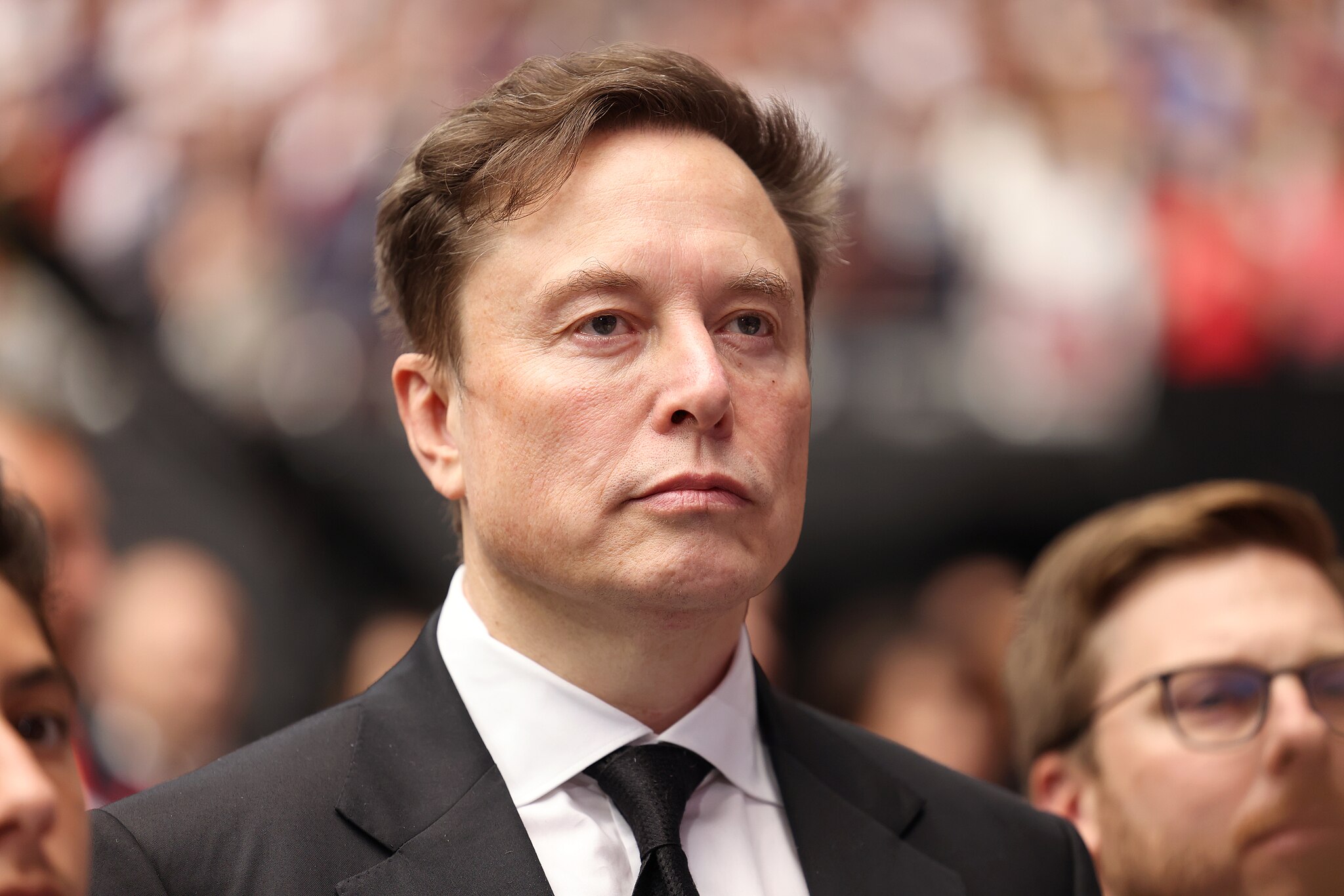
Elon Musk stated that rapid advances in artificial intelligence and robotics could make traditional work unnecessary within two decades.
Speaking on entrepreneur Nikhil Kamath’s podcast, Musk predicted that machines will soon handle most forms of labor, leaving humans to work only if they choose to.
Work as a “hobby”
During the discussion, Musk said the accelerating capability of AI systems and general-purpose robots will eventually cover all essential tasks, making human labor a choice rather than an economic requirement. “In less than 20 years, working will be optional. Working at all will be optional. Like a hobby,” Musk said.
When Kamath asked whether this future is driven by massive productivity growth, Musk agreed, noting that people will still be free to work if they enjoy the routine or the challenge. He compared future employment to home gardening, as it is something people can still do for personal satisfaction even if buying food from a store is far easier.
“Optional” work in the future
Elon Musk acknowledged the boldness of his claim and joked that people might look back in 20 years and say he was wrong. That being said, the CEO noted that such a scenario could even happen sooner than his prediction, at least if one were to consider the pace of the advancements in AI and robotics.
“Obviously people can play this back in 20 years and say, ‘Look, Elon made this ridiculous prediction and it’s not true,’ but I think it will turn out to be true, that in less than 20 years, maybe even as little as ten or 15 years, the advancements in AI and robotics will bring us to the point where working is optional,” Musk said.
Elon Musk’s comments echo his previous sentiments at Tesla’s 2025 Annual Shareholder Meeting, where he noted that Optimus could ultimately eliminate poverty. He also noted that robots like Optimus could eventually provide people worldwide with the best medical care.
Elon Musk
Elon Musk reiterates why Tesla will never make an electric motorcycle
Tesla CEO Elon Musk preemptively shut down speculations about a Tesla road bike once more.
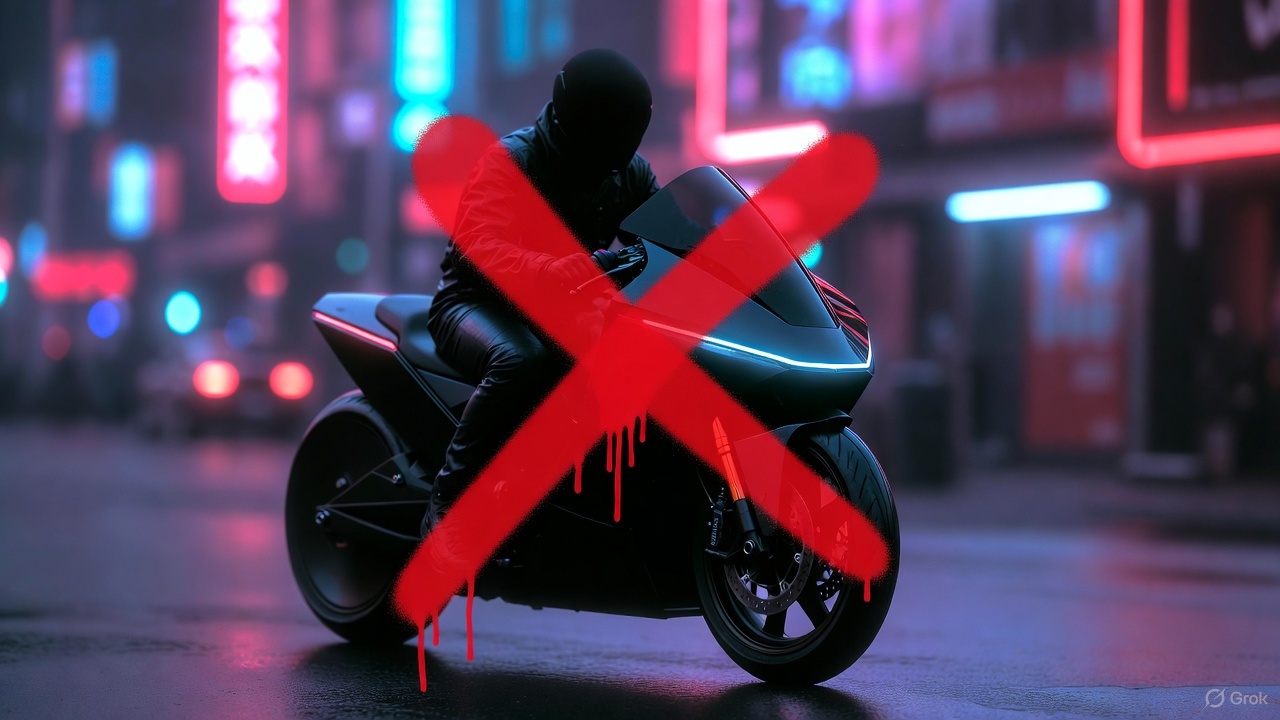
Tesla CEO Elon Musk preemptively shut down speculations about a Tesla road bike once more, highlighting that the electric vehicle maker has no plans to enter the electric motorcycle market.
Musk posted his clarification in a post on X.
Musk’s reply to a fun AI video
X user @Moandbhr posted an AI video featuring the Tesla CEO on the social media platform, captioning it with “Mr. Elon Musk Just Revealed the Game-Changing Tesla Motorcycle.” The short clip depicted Musk approaching a sleek, single-wheeled vehicle, stepping onto it, and gliding off into the distance amid cheers. The fun video received a lot of traction on X, gaining 3.1 million views as of writing.
Musk replied to the post, stating that a Tesla motorcycle is not going to happen. “Never happening, as we can’t make motorcycles safe. For Community Notes, my near death experience was on a road bike. Dirt bikes are safe if you ride carefully, as you can’t be smashed by a truck,” Musk wrote in his reply.
Musk’s Past Comments on Two-Wheelers
Musk also detailed his reservations about motorcycles in a December 2019 X post while responding to questions about Tesla’s potential ATV. At the time, he responded positively to an electric ATV, though he also opposed the idea of a Tesla road-going motorcycle. Musk did state that electric dirt bikes might be cool, since they do not operate in areas where large vehicles like Class 8 trucks are present.
“Electric dirt bikes would be cool too. We won’t do road bikes, as too dangerous. I was hit by a truck & almost died on one when I was 17,” Musk wrote in his post.
Considering Musk’s comments about dirt bikes, however, perhaps Tesla would eventually offer a road bike as a recreational vehicle. Such a two-wheeler would be a good fit for the Cybertruck, as well as future products like the Robovan, which could be converted into an RV.

